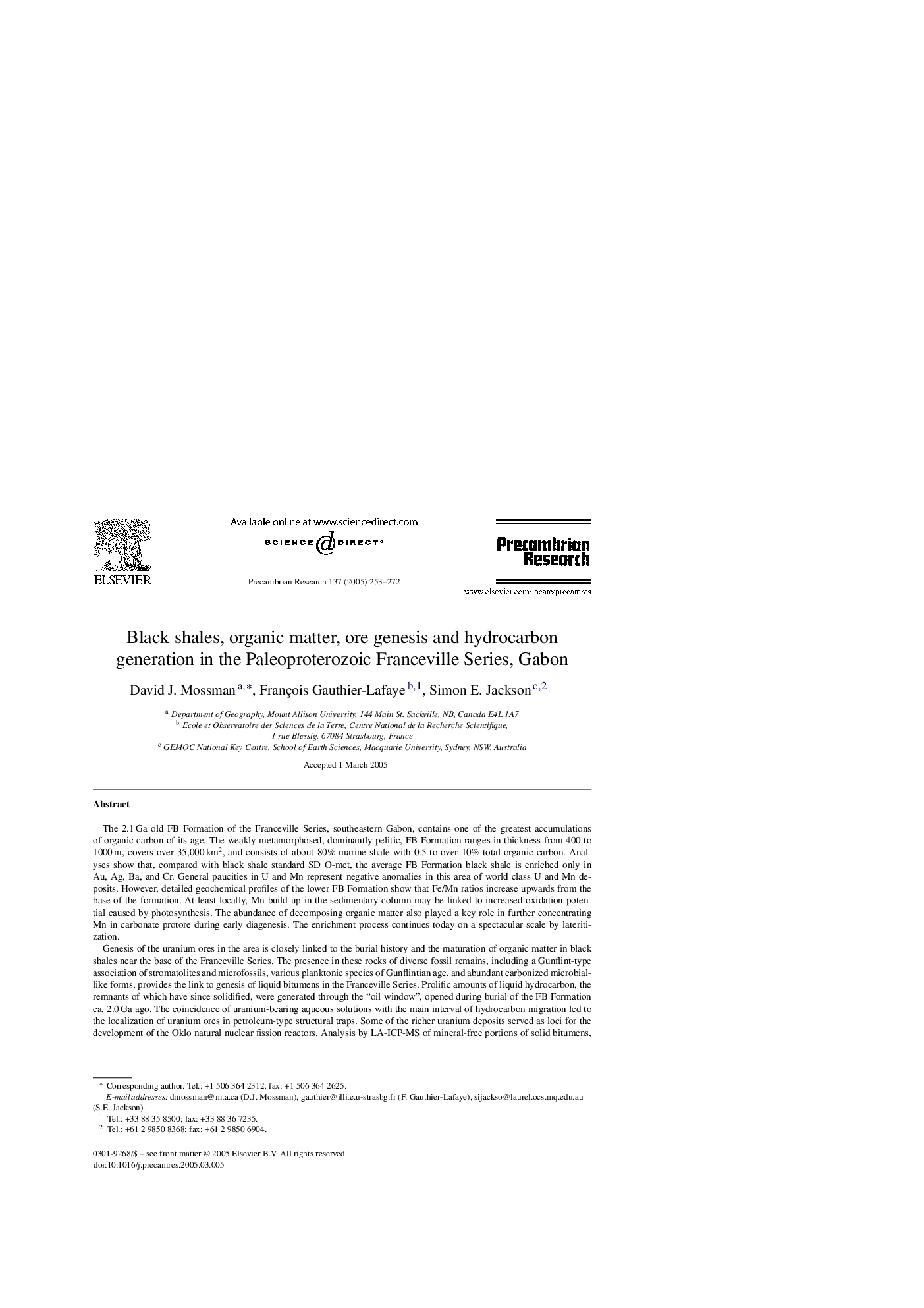| Article ID | Journal | Published Year | Pages | File Type |
|---|---|---|---|---|
| 9533600 | Precambrian Research | 2005 | 20 Pages |
Abstract
Genesis of the uranium ores in the area is closely linked to the burial history and the maturation of organic matter in black shales near the base of the Franceville Series. The presence in these rocks of diverse fossil remains, including a Gunflint-type association of stromatolites and microfossils, various planktonic species of Gunflintian age, and abundant carbonized microbial-like forms, provides the link to genesis of liquid bitumens in the Franceville Series. Prolific amounts of liquid hydrocarbon, the remnants of which have since solidified, were generated through the “oil window”, opened during burial of the FB Formation ca. 2.0Â Ga ago. The coincidence of uranium-bearing aqueous solutions with the main interval of hydrocarbon migration led to the localization of uranium ores in petroleum-type structural traps. Some of the richer uranium deposits served as loci for the development of the Oklo natural nuclear fission reactors. Analysis by LA-ICP-MS of mineral-free portions of solid bitumens, derived from the black shales, confirms the presence of various metals including Ba, V, Zn, and U (possibly as organometallic complexes) and serves to elucidate evolutionary pathways of bitumen and particular metal associations.
Related Topics
Physical Sciences and Engineering
Earth and Planetary Sciences
Geochemistry and Petrology
Authors
David J. Mossman, François Gauthier-Lafaye, Simon E. Jackson,
